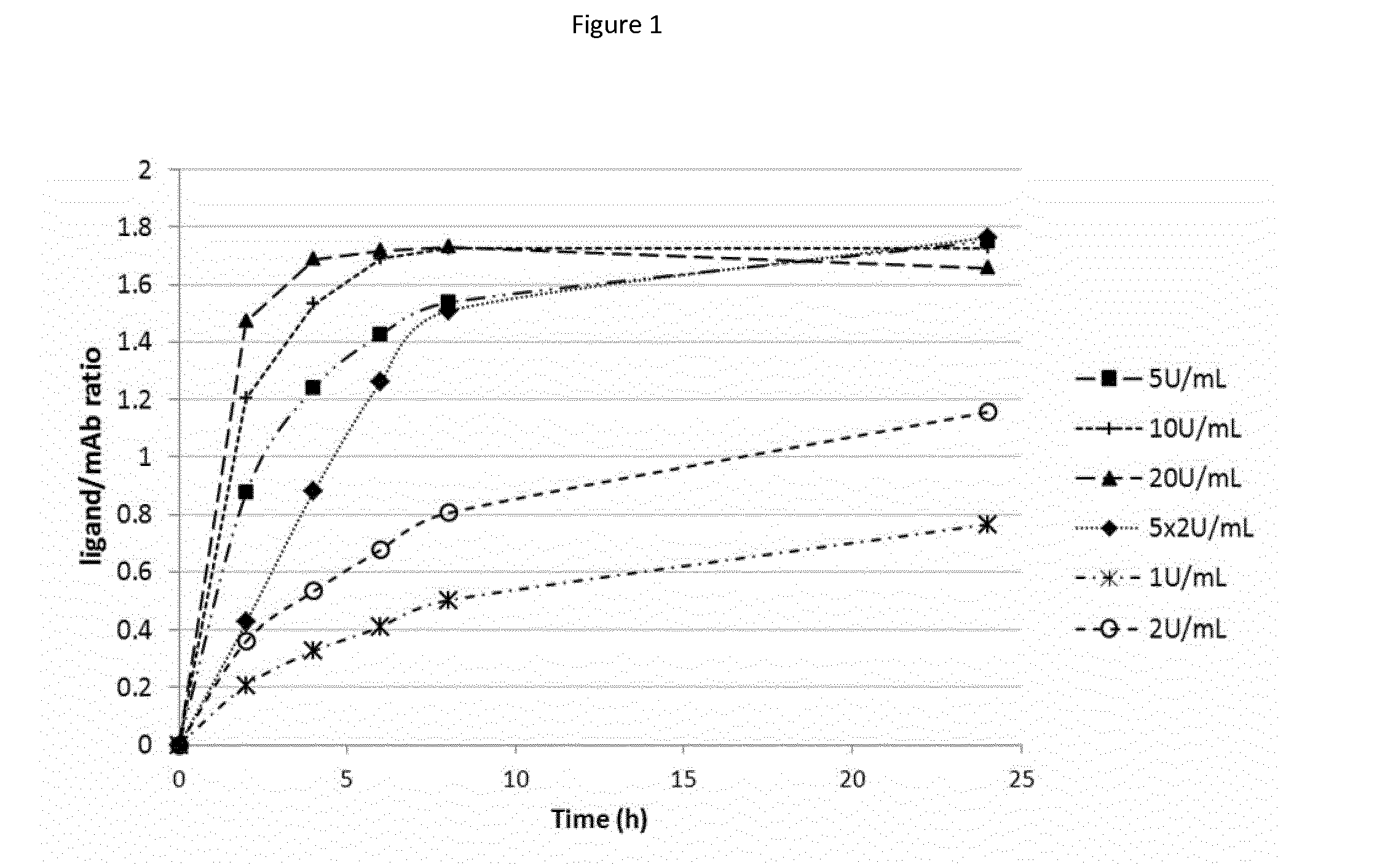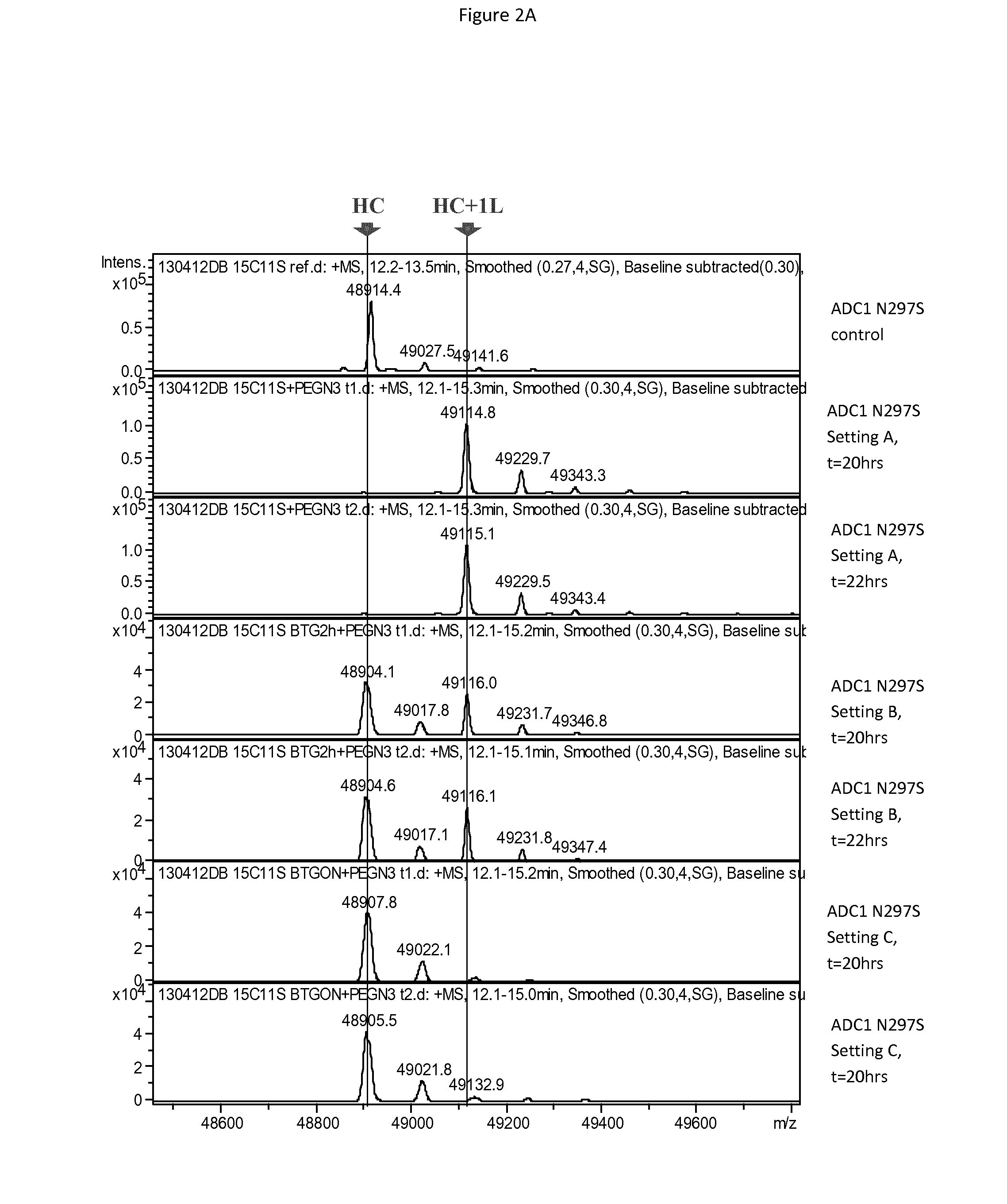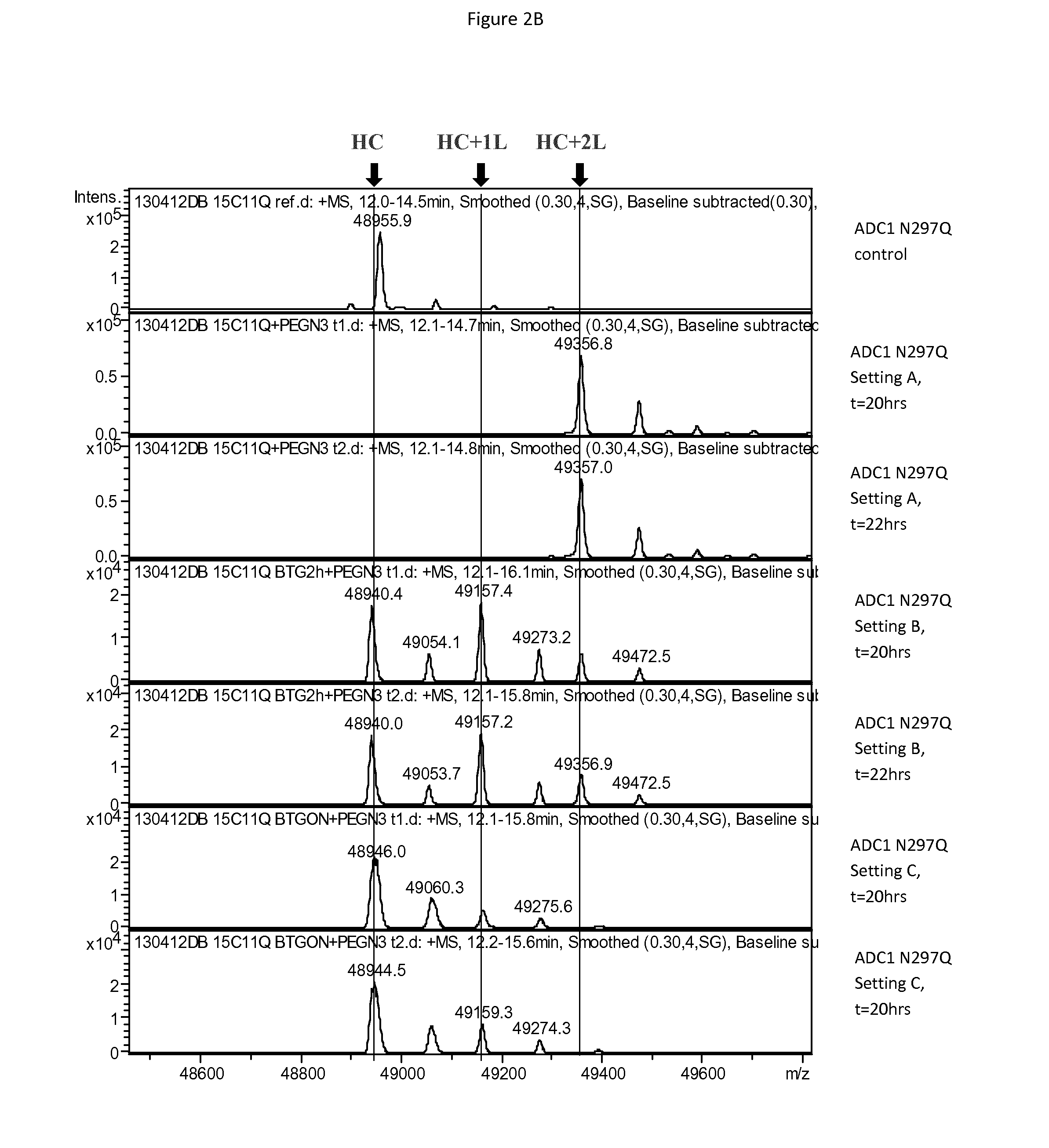Enzymatic conjugation of polypeptides
a polypeptide and enzyme technology, applied in the field of enzymatic conjugation of polypeptides and functionalization of immunoglobulins, can solve the problems of large increases in linking reagent substrates and inability to obtain higher dars, and achieve high conjugation levels, increase tgase activity, and reduce the effect of tgase activity
- Summary
- Abstract
- Description
- Claims
- Application Information
AI Technical Summary
Benefits of technology
Problems solved by technology
Method used
Image
Examples
example 1
Coupling Plateau for Large, Hydrophobic and / or Charged Payloads
[0475]BTG generally is unable to achieve high levels of coupling (high DARs) at the acceptor glutamine at residue 295 of linkers with large and / or hydrophobic organic molecules representative of cytotoxic drugs. To explore the possibility that optimized reactions might permit quantitative coupling reaction, parameters were explored, including effect of pH, temperature, linker stoichiometry. All reactions were monitored by HIC analysis or LC-MS. Samples for HIC analysis were taken after time periods and directly injected in HIC. Samples for MS analysis were frozen to stop the reaction.
[0476]FIG. 1 depicts the labeling of enzymatically deglycosylated ADC1 with dansyl-cadaverin substrate at different concentrations of BTGase, showing that higher labeling yields were achieved with increasing enzyme concentrations for BTGase, with optimized reaction conditions at 6 U / ml BTG, 1 mg / ml mAb, 20 equivalents of linker substrate, 18...
example 2
BTG Deamidates Acceptor Glutamine in the CH2 Domain
[0479]In order to explain the observation that BTG-mediated coupling of certain substrates onto antibodies does not reach completion despite optimized reaction conditions and Q297 variants, the effect of BTG on antibodies in the absence of amino (linker) substrate was investigated.
[0480]Antibody ADC1 having either a N297S mutation (one acceptor glutamine per heavy chain) or a N297Q mutation (two acceptor glutamines per heavy chain) was incubated with BTG, with a small, non-hydrophobic linker substrate having the structure below, with the linker being added either at the outset, after 2 hours of incubation or after 17 hours of incubation (overnight, ON), with reaction conditions of 6 U / ml BTG, 5 mg / ml mAb, 20 equivalents of linker substrate per acceptor glutamine, pH 7.4 and temperature of 37° C.
[0481]The coupling reaction was run overnight, with samples analyzed at 20 and 22 hours following the start of the reaction. Coupling was mo...
example 3
Design of an Improved Production Process
[0484]While the small cadavarin-dansyl substrate used in Example 1 couples well in optimized reaction conditions, we observe that difficult BTG substrates (e.g. large, charged and / or hydrophobic linker substrates) do not go to completion, reaching a coupling plateau at a DAR of about 1.6 (one acceptor glutamine per heavy chain) and about 3.5 (two acceptor glutamines per heavy chain). We hypothesized that in challenging coupling settings, water may compete with linker as a substrate for BTG coupling, leading to deamidation of acceptor glutamines. To investigate whether decreasing the BTG activity in a reaction vessel relative to the amount of antibody substrate available could decrease the amount of deamidated acceptor glutamines we evaluated different “low activity” BTG reaction conditions.
[0485]Coupling reactions were conducted using antibody SGN35, variant N297S was tested at concentrations of 1-5 mg / mL. A large hydrophobic linker (NH2-PEG-v...
PUM
| Property | Measurement | Unit |
|---|---|---|
| concentration | aaaaa | aaaaa |
| concentration | aaaaa | aaaaa |
| hydrophobic | aaaaa | aaaaa |
Abstract
Description
Claims
Application Information
 Login to View More
Login to View More - R&D
- Intellectual Property
- Life Sciences
- Materials
- Tech Scout
- Unparalleled Data Quality
- Higher Quality Content
- 60% Fewer Hallucinations
Browse by: Latest US Patents, China's latest patents, Technical Efficacy Thesaurus, Application Domain, Technology Topic, Popular Technical Reports.
© 2025 PatSnap. All rights reserved.Legal|Privacy policy|Modern Slavery Act Transparency Statement|Sitemap|About US| Contact US: help@patsnap.com



